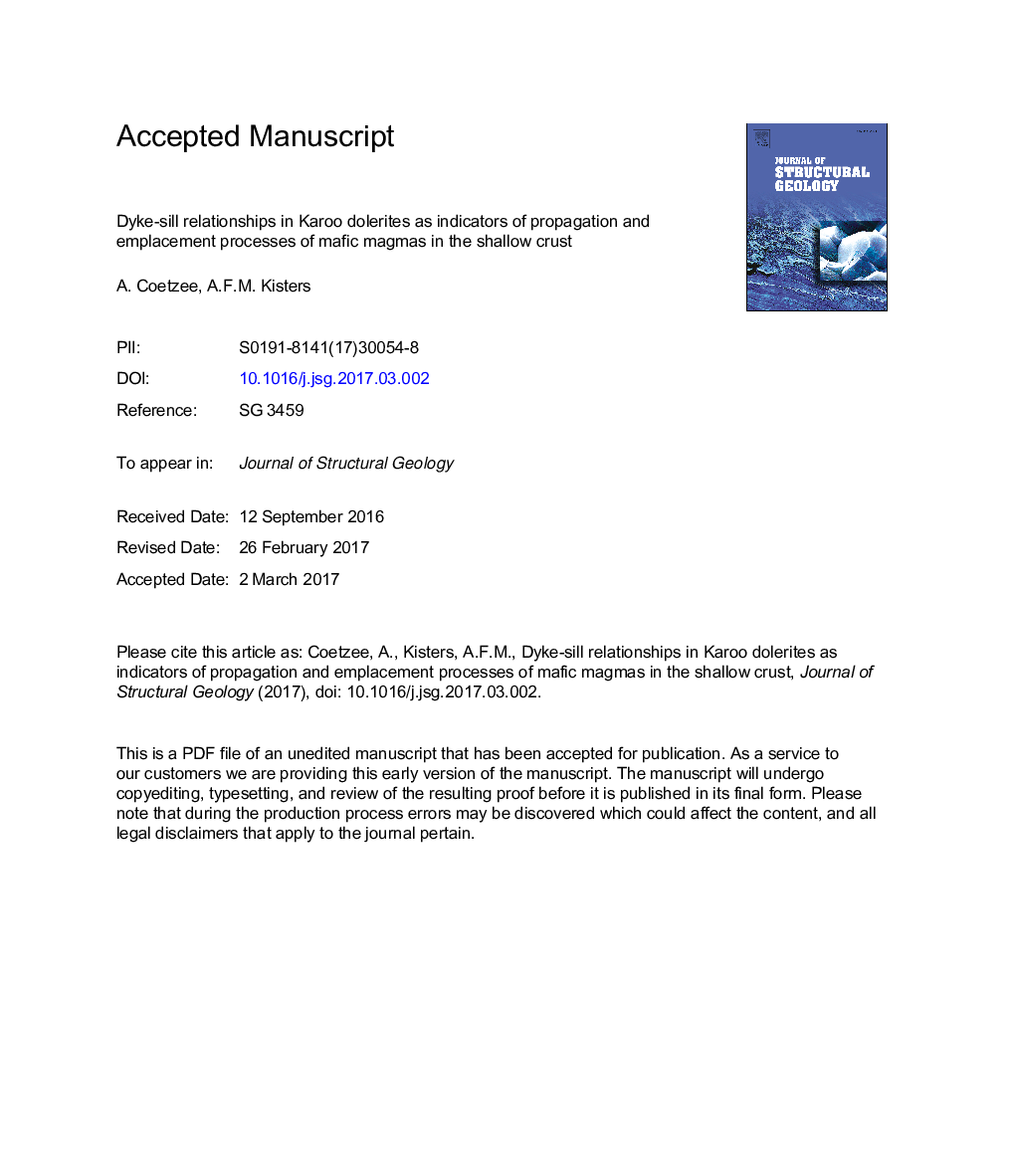| Article ID | Journal | Published Year | Pages | File Type |
|---|---|---|---|---|
| 5786345 | Journal of Structural Geology | 2017 | 49 Pages |
Abstract
This paper describes the spatial and temporal relationships between Karoo-age (ca. 180 Ma) dolerite dykes and a regional-scale saucer-sill complex from the Secunda (coal mine) Complex in the northeastern parts of the Karoo Basin of South Africa. Unlike parallel dyke swarms of regional extensional settings, mafic dykes commonly show curved geometries and highly variable orientations, short strike extents and complex cross-cutting and intersecting relationships. Importantly, the dyke networks originate from the upper contacts of the first-order dolerite sill-saucer structure and are not the feeders of the saucer complex. Cross-cutting relationships indicate the largely contemporaneous formation of dykes and the inner sill and inclined sheets of the underlying saucer. Systematic dykes form a distinct boxwork-type pattern of two high-angle, interconnected dyke sets. The formation and orientation of this dyke set is interpreted to be related to the stretching of roof strata above elongated magma lobes that facilitated the propagation of the inner sill, similar to the “cracked lid” model described for large saucer complexes in Antarctica. Dyke patterns generally reflect the saucer emplacement process and the associated deformation of wall rocks rather than far-field regional stresses.
Keywords
Related Topics
Physical Sciences and Engineering
Earth and Planetary Sciences
Geology
Authors
A. Coetzee, A.F.M. Kisters,
